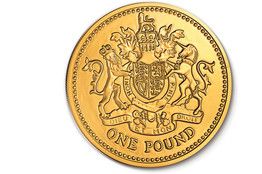Monday

A Monetary Primer . . . with Commentary
Does the whole topic of fiat currency and the gold standard confuse you? Don't feel bad. I couldn't have explained the important differences or the history behind our current monetary policy 15 months ago. I've had to read a small library of books and articles to get a good understanding.
But you don't need to. The brilliant James Grant has written a superb essay for the Wall Street Journal. It's humorous, filled with facts, and (most important) elucidating: it explains where we've been and where we are now. It explains why a gold standard works and why its opposite (paper currency) doesn't. It's the best article I've read in the past couple of weeks. Recommended, and highly recommended if that whole monetary system and its history is a cloud for you. Excerpts:
Ben S. Bernanke doesn't know how lucky he is. Tongue-lashings from Bernie Sanders, the populist senator from Vermont, are one thing. The hangman's noose is another. Section 19 of this country's founding monetary legislation, the Coinage Act of 1792, prescribed the death penalty for any official who fraudulently debased the people's money. . . .
The lifespan of no monetary system since 1880 has been more than 30 or 40 years, including that of my beloved classical gold standard, which perished in 1914. The pure paper dollar regime has been a long time dying. It was no good portent when the tellers' bars started coming down from neighborhood bank branches. The uncaged teller was a sign that Americans had began to conceive an elevated opinion of the human capacity to manage financial risk. There were other evil omens. In 1970, Wall Street partnerships began to convert to limited liability corporations–Donaldson, Lufkin & Jenrette was the first to make the leap, Goldman Sachs, among the last, in 1999. In a partnership, the owners are on the line for everything they have in case of the firm's bankruptcy. No such sword of Damocles hangs over the top executives of a corporation. The bankers and brokers incorporated because they felt they needed more capital, more scale, more technology–and, of course, more leverage.
The Manhattan Declaration
Regular TDE reader Jean Heimann wrote about it for the Wichita Catholic Examiner:
More than 200,000 people have signed the Manhattan Declaration: A Call of Christian Conscience,a historic document released by Evangelical, Orthodox and Catholic leaders, which strongly upholds and defends the sanctity of life, the dignity of marriage and rights of conscience, and religious liberty.
You can sign the Declaration here.
UFG(ay)
I stumbled across this piece by sheer accident, but it cracked me up: Is Ultimate Fighting Gay? R-Rated (maybe a blend between PG-13 and R).
